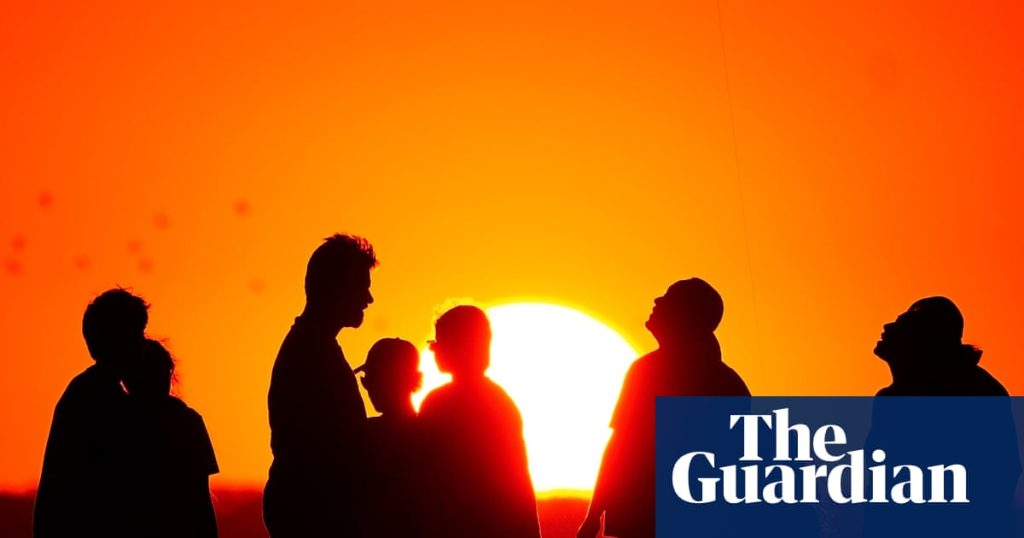The prolonged Nordic heatwave in July was supercharged by the climate crisis and shows “no country is safe from climate change”, scientists say.
Norway, Sweden and Finland have historically cool climates but were hit by soaring temperatures, including a record run of 22 days above 30C (86C) in Finland. Sweden endured 10 straight days of “tropical nights”, when temperatures did not fall below 20C (68F).
Global heating, caused by the burning of fossil fuels, made the heatwave at least 10 times more likely and 2C hotter, the scientists said. Some of the weather data and climate models used in their analysis indicated the heatwave would have been impossible without human-caused climate breakdown.
The heat had widespread effects, with hospitals overheating and overcrowding and some forced to cancel planned surgery. At least 60 people drowned as outdoor swimming increased, while toxic algal blooms flourished in seas and lakes.
Hundreds of wildfires burned in forests and people were reported fainting at holiday-season events. In the last major heatwave in the region, in 2018, 750 people died early in Sweden alone, and scientists anticipate a similar toll once the data is processed.
Wildlife was also affected, especially the Scandinavian peninsula’s famous reindeer. Some animals died in the heat and others entered towns seeking shade. Drivers were warned that reindeer could seek to cool down in road tunnels.
Much of the northern hemisphere has experienced heatwaves in recent weeks. This includes the UK, Spain and Croatia, where wildfire destruction is almost double the 20-year average, and the US, Japan and South Korea. Scientists are certain that the climate crisis has intensified this extreme weather.
Prof Friederike Otto, a climatologist at Imperial College London who leads the World Weather Attribution (WWA) collaboration, which did the Nordic analysis, said: “Even relatively cold Scandinavian countries are facing dangerous heatwaves today with 1.3C of warming – no country is safe from climate change.
“Burning oil, gas, and coal is killing people today. Fossil fuels are supercharging extreme weather and to stop the climate from becoming more dangerous, we need to stop burning them and shift to renewable energy.”
Heatwaves such as the one in Scandinavia will become another five times more frequent by 2100 if global heating reaches 2.6C, which is the trajectory today.
Maja Vahlberg, a Swedish expert at the Red Cross Red Crescent Climate Centre, said: “This July reminded us that in the north, heat is not a distant threat but is seeping into hospitals, care facilities and homes. Our infrastructure was not built to withstand these extreme temperatures and our ageing population is increasingly susceptible to dangerous heat.
“I watched a reindeer stay in the same patch of shade for three days straight without grazing, a quiet sign of the strain the heat was causing,” she said.
The rapid WWA study on the role of human-caused global heating in the Nordic heatwave compared the likelihood of the high temperatures in today’s hotter climate with that in the cooler preindustrial period, focusing on the hottest two-week period in each country.
It found that even the relatively small 0.2C rise in global temperature since 2018 had doubled the chance of such heatwaves, showing that every fraction of a degree mattered, the scientists said. “Climate change is fundamentally reshaping the world we live in,” said Dr Clair Barnes, at Imperial College London.
A striking aspect of the heatwaves was the number of tropical nights. “At one station in northern Sweden, we had 10 of these days at the end of July, which is extraordinary,” said Prof Erik Kjellström, at the Swedish Meteorological Institute.
Amalie Skålevåg, at the Norwegian Meteorological Institute, said: “Hot nights can be dangerous when the body does not get a chance to rest and recover after a hot day, and this is particularly true for people with underlying health conditions.”
The effects of the heatwave on reindeer threaten the livelihoods of Indigenous Sámi communities, which have herded them for more than 1,000 years. “Such disruptions also threaten [the Sámi’s] health and their right to sustain a way of life – this makes climate change a human rights issue,” said Vahlberg.

